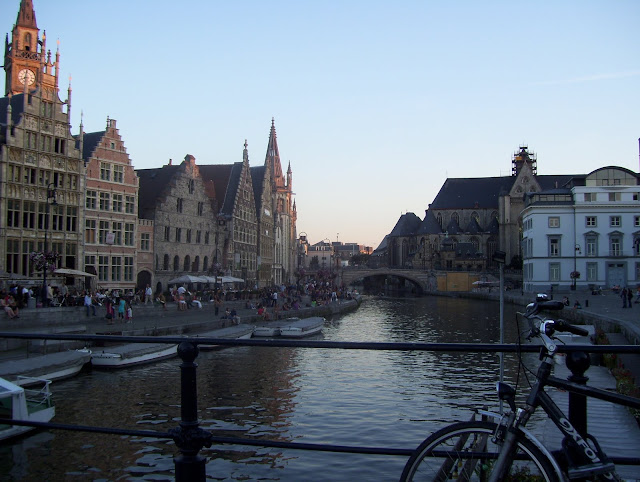GHENT, BELGIUM - City on the river mouth with its lights
By zerrinhosgor - 12/02/2009 09:13:00 AM

Ghent is a historical city with its art, culture and events. The city's name means 'river mouth' or confluence. Until the 13th century Ghent was the biggest city in Europe after Paris; it was bigger than London, Cologne or Moscow. During my short trip to Ghent, I stayed in one of my friends’ place and I had a chance to learn about city, its historical and cultural features, transportation policies and life styles from her. As my friend told me, beside its historical character, Ghent presents a contemporary city view. Ghent has managed to preserve its mediaval power, while keeping up with time. It is a university city and presence of young people and students has turned Ghent into an important cultural centre. Ghent established a nice blend between comfort of living and history – it is not a museum city. It is an alive city.
When I was there,there were lots of restoration and construction works to make the city and cultural life better. Honestly, I must confess that I felt like I was in Istanbul. These initiatives and vitality made me feel like that. Large public squares, ancient buildings, churches, towers and other historical buildings were remarkable nodes in the city.


Especially true mediaval castle in the middle of the city impressed me so much. While we were walking in the city, it appeared in front of us and it was amazing in the evening with its lights. I visited the city at night and it was more desirable for me to feel the real life when tourists left and inhabitants stayed. City was also great with its lights and rivers in the evening.
 When you walk in each street, you feel different ambience because every street of the city reflects different character of it. Some streets are narrow which give you a feeling like you are in a historical city, while others are wide and present a modern city view. Second interesting point was the old fish market at St. Veerleplein. There was a restoration works in there to make a new fish market having a walking area with view on to the rivers and hosting an event hall. I think it will be a nice attraction point with its original charm and character.
When you walk in each street, you feel different ambience because every street of the city reflects different character of it. Some streets are narrow which give you a feeling like you are in a historical city, while others are wide and present a modern city view. Second interesting point was the old fish market at St. Veerleplein. There was a restoration works in there to make a new fish market having a walking area with view on to the rivers and hosting an event hall. I think it will be a nice attraction point with its original charm and character.
In Ghent, people try to use bicycles and public transportation for their daily lifes. There are good infrastructure opportunities such as underpasses under bridge to provide continuous cycling routes and the city has an extensive public transport network serving the city centre and surrounding area. These were results of good transportation policies. Ghent can be easily reached by car and national trains from other cities in Belgium.

At the same time,these transport opportunities by car leads to excessive private vehicle usage in the city. In order to counter the traffic problems, a number of plans had been established. With the bicyle plan (1993), cycling infrastucture and bicycle culture were created. A lot of infrastructure was, and is still, constructed along city roads or along the abundant waterways in the city (including some underpasses under bridges). With the mobility plans for the inner city (1997), it was injected a new dynamism into the historical centre of Ghent. Creating large pedestrian area, traffic flow measures, constraints for car usage in city center, traffic calming, and re-designing the streets and squares to make the city more attractive to citizens and visitors were important decisions of that plan. Ghent has one of the largest car-free area in Europe now.
I couldn’t spend more time to discover the city but, I felt its unique character and I look forward to be there again in a short period.
"Ghent is not just a city like any other which will charm you for a moment then let you go without a further thought. No. Like a beautiful woman who is very much aware of her charms, Ghent will seduce you with its passion and fire. You’ll be distraught to leave it and consumed with longing."
 Le Guide du Routard
Le Guide du Routard












0 comments